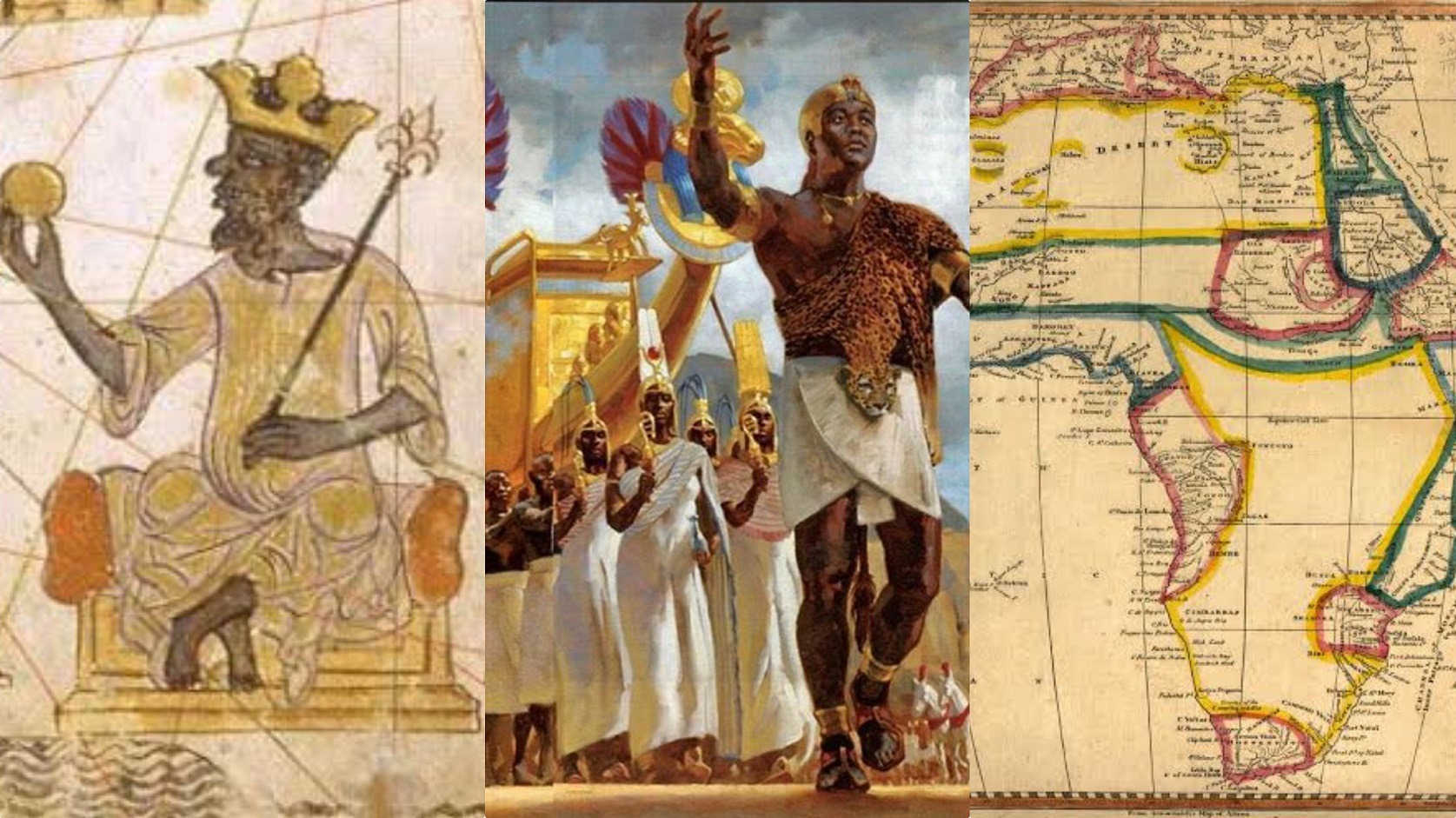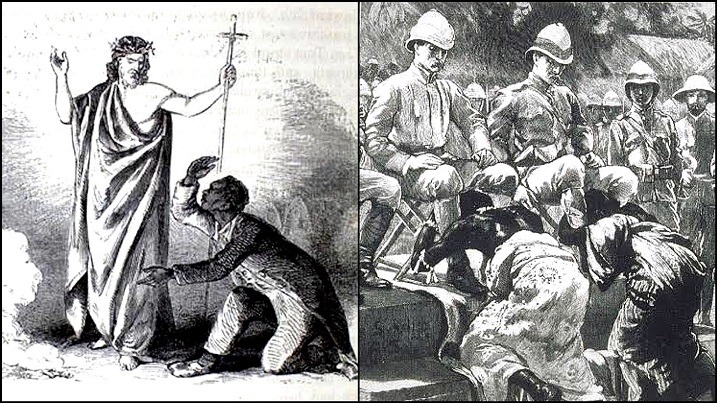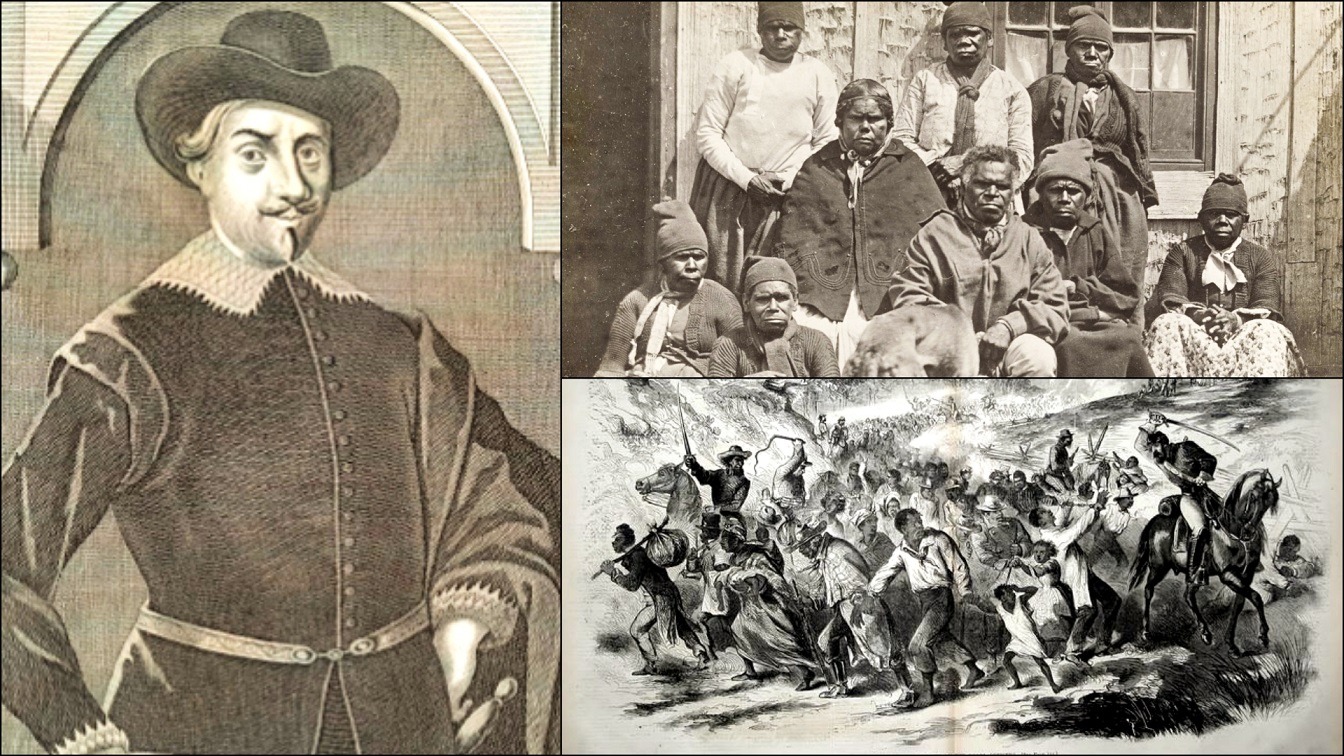Many people have been forced to believe the lies that Africans were living in caves and bushes before the colonizers came. Accounts have been given of how Africa was a primitive civilization with no inventions and contributions to human development. But many of these accounts are false to a certain degree. This article does not cover a pinch of the glory Africa had, but it helps in building a foundation o knowledge for our people and others who care to know.
1. The human race originated from Africa/Afrika. The oldest known skeletal remains of anatomically modern humans (or homo sapiens) were excavated at archeologic sites in East Africa. Other human remains were discovered at Omo in Ethiopia. The remains were dated at 195,000 years old, and they are the oldest known in the world.
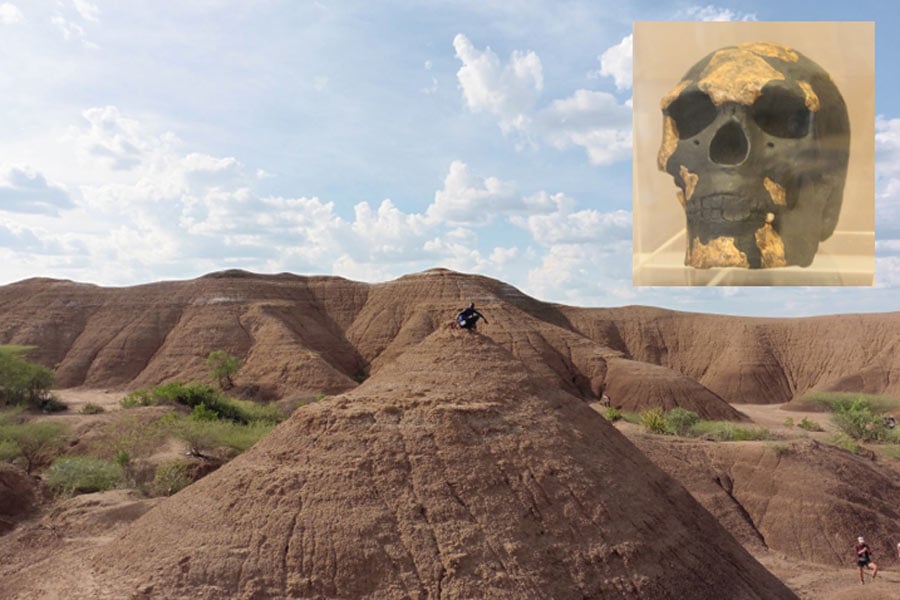
2. Skeletons of pre-humans have been discovered in Africa that date back to about 4 and 5 million years ago. The oldest known ancestral type of humanity is believed to have been the australopithecus ramidus, who lived at least 4.4 million years ago.
3. We Africans were the first to organize fishing expeditions 90,000 years ago. At Katanda, a region in Northeastern Zaïre (now called Congo), archeologists recovered a finely wrought series of harpoon points, all finely polished and barbed. Also, they uncovered a tool, equally well crafted, believed to be a dagger. The discoveries suggested the existence of early fishing culture and tribe.
4. Africans cultivated crops 12,000 years ago. These were the first known advances in agriculture after the stone age. Professor Fred Wendorf discovered that the people of Egypt’s Western Desert planted and harvested crops such as barley, chick-peas capers, dates, legumes, lentils, and wheat. The ancient tools they used were also recovered. There were grindstones, hide scrapers milling stones, engraving burins, cutting blades, and mortars and pestles.
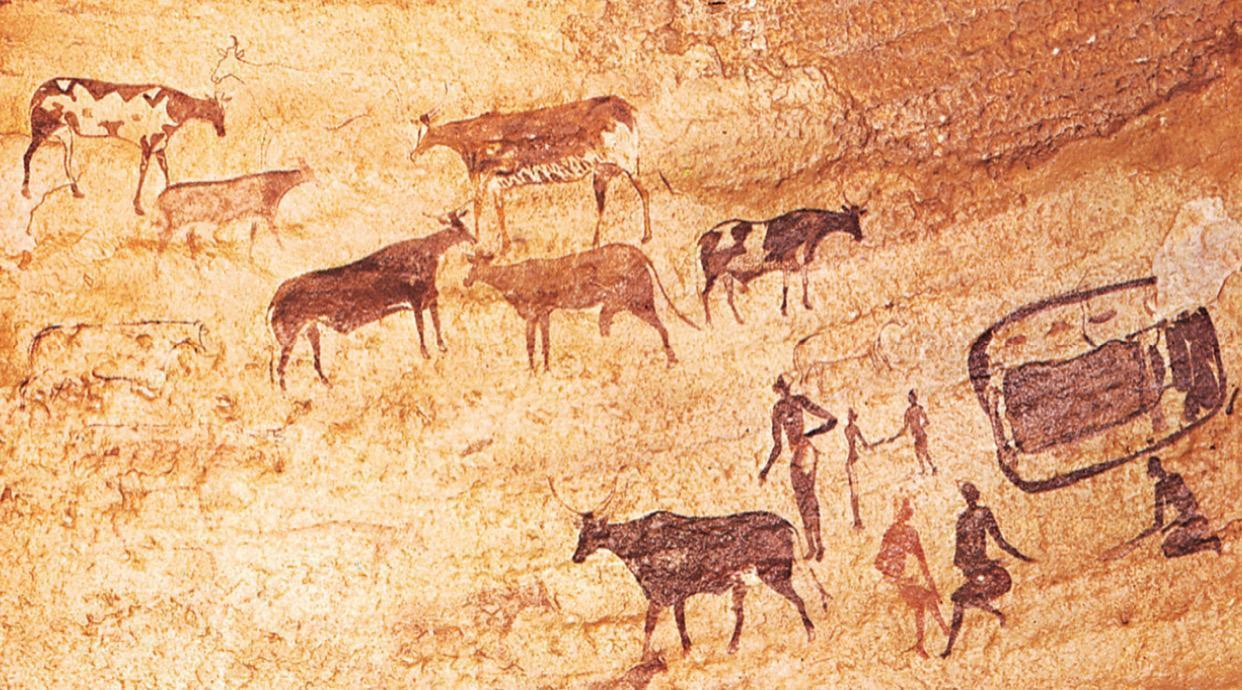
5. Africans were the first people to engage in mining 43,000 years ago. In 1964 a hematite mine was discovered in Swaziland at Bomvu Ridge in the Ngwenya mountain range. Surprisingly 300,000 artifacts were recovered at the site, including thousands of stone-made mining tools. Adrian Boshier, one of the archaeologists on the site, dated the mine to be about 43,200 years old.

6. Africans were the pioneers of basic arithmetic 25,000 years ago. The Ishango bone is a tool-handle with marks carved into it found in the Ishango region of Zaïre (now called Congo), near Lake Edward.
The Ishango bone was originally thought to have been over 8,000 years old, but more recent carbon dating has revealed that they are actually 25,000 years old. On the bone, tool are 3 rows of marks. Row 1 clearly shows three marks carved next to six, four carved next to eight, ten carved next to two fives. And finally, a seven. The 3 and 6, 4 and 8, and 10 and 5, represent the process of doubling. Row 2 shows eleven marks carved next to twenty-one marks, and nineteen marks carved next to nine marks. This represents 10 + 1, 20 + 1, 20 – 1 and 10 – 1. Finally, Row 3 shows eleven marks, thirteen marks, seventeen marks, and nineteen marks. 11, 13, 17, and 19 are the prime numbers found between 10 and 20.
7. Africans were the first to carve the world’s first colossal sculpture 7,000 or more years ago. The Great Sphinx of Giza was designed with the head of a man combined with the body of a lion. A vital and important question raised by this monument was: How old is it? In October 1991 Professor Robert Schoch, a geologist from Boston University demonstrated that the Sphinx was sculpted between 5000 BC and 7000 BC, dates that he considered being conservative. Meaning that the sculpture could actually be older.
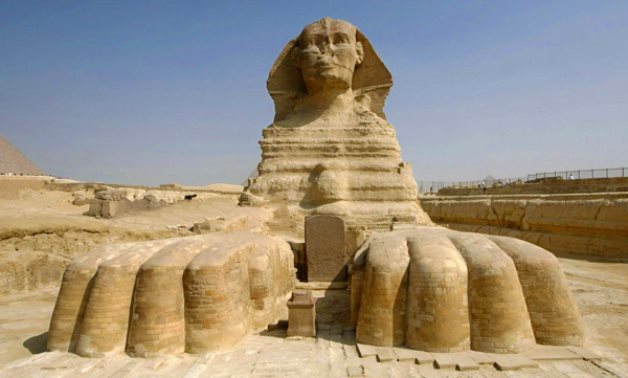
8. Africans mummified their dead people 9,000 years ago. A mummified infant was found under the Uan Muhuggiag rock shelter in the southwestern part of Libya. The infant was buried in the fetal position and was mummified using a very sophisticated method that must have taken hundreds of years to evolve. The method is believed to predate the earliest mummies known in Ancient Egypt by at least 1,000 years. Carbon dating is sometimes controversial but the mummy may date from 7438 (±220) BC.
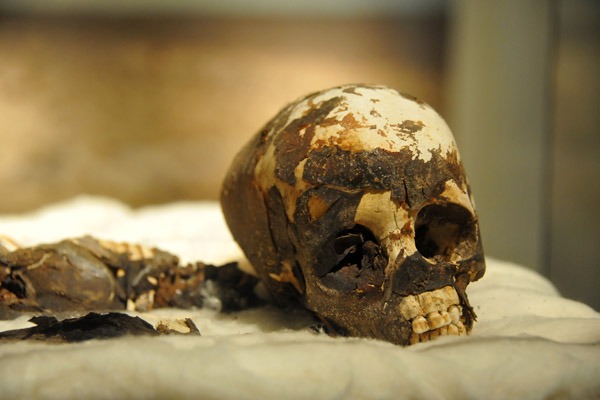
9. On the 1st of March 1979, the New York Times published an article on its front page and also on page sixteen that was entitled “Nubian Monarchy called Oldest.” In this article, we were assured that: “Evidence of the oldest recognizable monarchy in human history, preceding the rise of the earliest Egyptian kings by several generations, has been discovered in artifacts from ancient Nubia.” That is the territory of northern Sudan and the southern portion of modern Egypt.
10. The ancient Egyptians had the same kind of tropically adapted skeletal proportions just as modern Black Africans. A 2003 paper appeared in the American Journal of Physical Anthropology by Dr. Sonia Zakrzewski entitled ‘Variation in Ancient Egyptian Stature and Body Proportions where she stated: “The raw values in Table 6 suggest that Egyptians had the ‘super-Negroid’ body plan described by Robins (1983). The values for the brachial and crural indices show that the distal segments of each limb are longer relative to the proximal segments than in many ‘African’ populations.”
11. The ancient Egyptians were known to have Afro combs. One writer talks about how the Egyptians “manufactured a very striking range of combs in ivory: the shape of these is distinctly African and is like the combs used even today by Africans and those of African descent.”

12. The Funerary Complex in the ancient city of Saqqara in Egypt is the oldest building that tourists visit regularly to date. The whole structure is surrounded by an outer wall which is now mostly in ruins. Through the entrance are a series of columns, the first stone-built columns known to historians. The North House also has ornamental columns built into the walls that have papyrus-like capitals. Also, inside the complex is the Ceremonial Court, made of limestone blocks that have been quarried and then shaped. In the center of the complex is the Step Pyramid, the first of 90 Egyptian pyramids.

13. The first Great Pyramid of Giza, which is the most extraordinary building in history, was a staggering 481 feet tall. It is the equivalent of a 40-story building. It was made of 2.3 million blocks of limestone and granite, some of them weighing 100 tons.
14. The ancient Egyptian city of Kahun was the world’s first well-planned city. Rectangular and walled, the city was divided into two parts. One part housed the wealthier inhabitants – which were the scribes, officials, and foremen. The other part housed the ordinary people of the city. The streets of the western section, in particular, were straight, laid out on a grid, and crossed each other at right angles. A stone gutter, over half a meter wide, ran down the center of every street in the city.

15. Egyptian mansions were discovered in Kahun – each having 70 rooms, divided into four sections or quarters. There was a master’s quarter, quarters for women and servants, quarters for offices, and finally, quarters for granaries, each facing a central courtyard. The master’s quarters had an open court with a stone water tank for bathing. Surrounding this was a colonnade. These were architecture that rival what the Europeans have today, and they were built thousands of years ago.
16. The Labyrinth in the Egyptian city of Hawara with its large layout, multiple courtyards, chambers, and halls, was the very biggest building in antiquity. Boasting three thousand rooms, 1,500 of them were above ground and the other 1,500 were built underground.

17. Toilets and sewerage systems existed in ancient Egypt, while Europeans still lives in caves. One of the pharaohs built a city that is now known as Amarna.

An American urban planner noted: “Great importance was attached to cleanliness in Amarna as in other Egyptian cities. Toilets and sewers were in use to dispose of waste. Soap was made for washing the body. Perfumes and essences were popular against body odor. A solution of natron was used to keep insects from houses … Amarna may have been the first planned ‘garden city.”
18. Many do not know that Sudan has more pyramids than any other country on earth – even more than Egypt. There are about 223 pyramids in the Sudanese cities of Al Kurru, Nuri, Gebel Barkal, and Meroë. They are all about 20 to 30 meters high and steep-sided.

19. The surviving monuments of Sudan, which date back thousands of years, are found predominantly in the city of Meroë. Becoming the capital of the Kushite Empire between 590 BC until AD 350, there are 84 pyramids in this city alone. Many of them were built with their own miniature temple. In addition, there are ruins of a bathhouse sharing resemblance with those of the Romans. Its central feature is a massive pool approached by a flight of steps with waterspouts decorated with lion heads.

20. Bling culture has a long and interesting history in Africa. Gold was used to decorate the ancient Sudanese temples. One writer reported that: “Recent excavations at Meroe and Mussawwarat es-Sufra revealed temples with walls and statues covered with gold leaf”.

21. Around 300 BC, the Sudanese invented a writing script that contained twenty-three letters/alphabets of which four were vowels and there was also a word divider. Hundreds of these ancient texts have survived that were in this script. Some are currently on display in the British Museum.

22. The oldest civilization in West Africa was in central Nigeria. It flourished between 1000 BC and 300 BC. Discovered in 1928, the ancient culture/civilization was called the ‘Nok Civilisation’, named after the village in which the early artifacts were discovered. Two modern scholars, declare that “after calibration, the period of Nok art spans from 1000 BC until 300 BC”. The area itself inhabited by the Gwari people is much older going back as early as 4580 or 4290 BC.
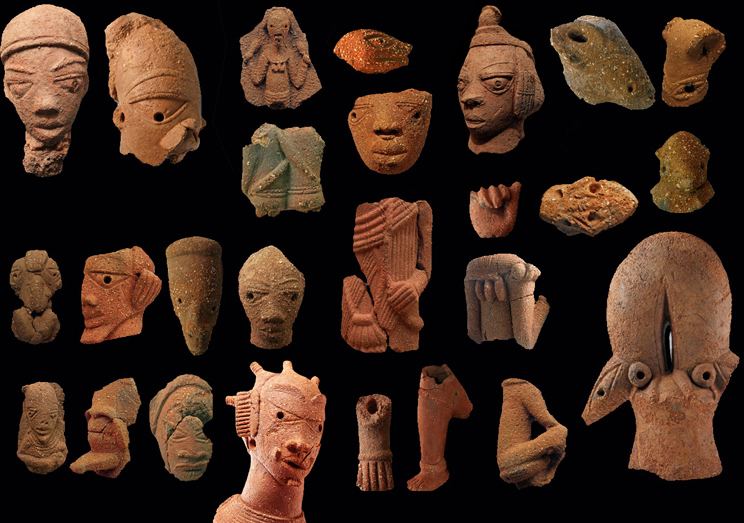
23. West Africans built in stone around the year 1100 BC. In the Tichitt-Walata region of Mauritania, archaeologists have found “large stone masonry villages” that dated back to 1100 BC. The villages consisted of roughly circular compounds and houses connected by “well-defined streets”.
24. By 250 BC, the foundations of West Africa’s oldest cities were already established. One of the cities was Old Djenné in Mali.
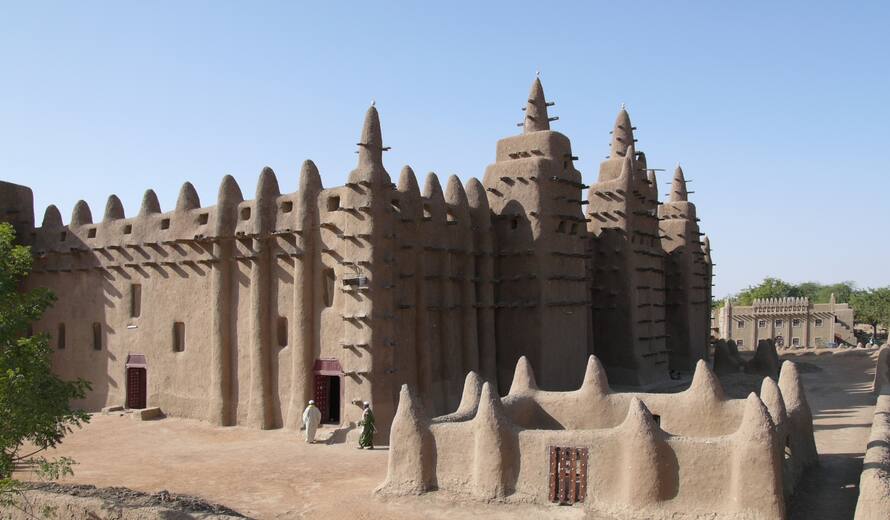
25. Kumbi Saleh, the capital of Ancient Ghana, is said to have flourished from 300 to 1240 AD. Located in modern-day Mauritania, archaeological excavations have revealed houses, almost habitable today. They are several stories high. They are said to have had underground rooms, staircases, and connecting halls. Some had nine rooms. One section of the city alone is estimated to have housed 30,000 people.

26. As opposed to the savage and backward civilization, reported by the early missionaries, West Africa had walled towns and cities in the pre-colonial period. Winwood Reade, an English historian visited West Africa in the nineteenth century and reported that: “There are … thousands of large walled cities resembling those of Europe in the Middle Ages, or of ancient Greece.”
27. Lord Lugard, an English official, estimated in 1904 that there were at least 170 walled towns still in existence in the whole of just the Kano province of Northern Nigeria. To date, they are called the ancient Kano city.

28. Cheques are not really as new an invention as we were led to believe. In the tenth century, an Arab geographer, Ibn Haukal, had visited a fringe region of Ancient Ghana. Writing in 951 AD, he spoke of a cheque for 42,000 golden dinars written to a merchant in the city of Audoghast by his partner in Sidjilmessa.
29. Ibn Haukal, writing in 951 AD, informs us that the King of Ghana was “the richest king on the face of the earth” He alluded his pre-eminence to the number of gold nuggets that had been amassed by himself and by his predecessors.
30. The Nigerian city of Ile-Ife was paved in 1000 AD on the supreme orders of a female ruler with decorations that originated in Ancient America. Naturally, no one really wants to explain how this took place approximately 500 years before the time of Christopher Columbus. But it is obvious that Africans traveled to and from ancient America.

31. West Africa had distinct bling culture in 1067 AD. One source mentions that when the Emperor of Ghana talks to his people: “he sits in a pavilion around which stand his horses caparisoned in cloth of gold: behind him stand ten pages holding shields and gold-mounted swords: and on his right hand are the sons of the princes of his empire, splendidly clad and with gold plaited into their hair … The gate of the chamber is guarded by dogs of an excellent breed … they wear collars of gold and silver.” This was the kind of glory and riches we had in Africa, till vandals came to steal it all away.
32. It was said that Glass windows existed at that time. The palace of the Ghanaian Emperor in 1116 AD was: “A well-built castle, thoroughly fortified, decorated inside with sculptures and pictures, and having glass windows.”
33. The Grand Mosque in the Malian city of Djenné, is described as “the largest adobe clay-building in the world”, was first raised in 1204 AD. It was built on a solid square plan where each side was 56 meters in length. It has three large towers on every side, each with projecting wooden buttresses.

34. One of the great achievements of the Yoruba people was their urban culture. “By the year A.D. 1300,” narrates a modern scholar, “the Yoruba people built numerous walled cities surrounded by farms”. The cities were Owu, Oyo, Ijebu, Ijesa, Ketu, Popo, Egba, Sabe, Dassa, Egbado, Igbomina, including the sixteen Ekiti principalities, Owo and Ondo.

35. The Yoruba metal art of the medieval period was world-class. One scholar wrote that the Yoruba art “would stand comparison with anything which Ancient Egypt, Classical Greece, and Rome, or Renaissance Europe had to offer.”

36. In the Malian city of Gao stands the Mausoleum of Askia the Great. It is a weird sixteenth-century edifice that resembles a step pyramid.
37. Thousands of medieval Tumuli have been found across West Africa. Nearly 7,000 were discovered in northwest Senegal alone spread over nearly 1,500 sites. They were said to have been probably built between 1000 and 1300 AD.
38. The excavations at the Malian city of Gao carried out by Cambridge University revealed glass windows. One of the findings was entitled: “Fragments of alabaster window surrounds and a piece of pink window glass, Gao 10th – 14th century.”
39. In 1999 the BBC produced a television series entitled ‘Millennium.’ The program which was devoted to the fourteenth century opens with the following disclosure: “In the fourteenth century, the century of the scythe, natural disasters threatened civilizations with extinction. The Black Death kills more people in Europe, Asia, and North Africa than any catastrophe has before. Civilizations that avoid the plague thrive. In West Africa, the Empire of Mali becomes the richest in the world.”
40. Most people in the world do not know that Malian sailors got to America in 1311 AD, 181 years before Columbus. An Egyptian scholar, Ibn Fadl Al-Umari, made a publication about this sometime around 1342. In the tenth chapter of his book, there is an account of two large maritime voyages which were ordered by the predecessor of Mansa Musa, a king who inherited the Malian throne in 1312. This mariner king is not named by Al-Umari, but modern writers have identified him as Mansa Abubakari II.
41. It was recorded that on a pilgrimage to Mecca in 1324 AD, a Malian ruler, Mansa Musa, brought so much money with him that his visit resulted in the collapse of gold prices in Egypt and Arabia. It took another twelve years for the economies of the region to return to what it was.
42. It is hardly known that West African gold mining took place on a vast scale. One modern writer noted that: “It is estimated that the total amount of gold mined in West Africa up to 1500 was 3,500 tons, worth more than $30 billion in today’s market value.”
43. The old Malian capital of Niani had a 14th century building that is/was called the Hall of Audience. It was surmounted by a dome, adorned with arabesques of striking colors. The windows of the upper floor were plated with wood and framed in silver; those of a lower floor were plated with wood, and were framed in gold.
44. Mali in the 14th century was already highly urbanized. Sergio Domian, an Italian architecture art and scholar, wrote the following accounts about this period: “Thus was laid the foundation of an urban civilization. At the height of its power, Mali had at least 400 cities, and the interior of the Niger Delta was very densely populated”.
45. The Malian city of Timbuktu had a 14th century population of 115,000 which was 5 times larger than mediaeval London. Mansa Musa, the ruler, built the Djinguerebere Mosque in the fourteenth century. There was a University Mosque in which 25,000 students studied and the Oratory of Sidi Yayia. There were over 150 Koran schools in which about 20,000 children were instructed. London, by contrast, at the time, had a total 14th century population of 20,000 people.
46. National Geographic, in a documentary, recently described Timbuktu as the Paris of the mediaeval world. This was on account of its intellectual culture. According to Professor Henry Louis Gates, 25,000 university students from Mali and around the world studied there.
47. There are Many old West African families who have private library collections that go back hundreds of years. The Mauritanian cities of Chinguetti and Oudane have a total collection of 3,450 hand written mediaeval books. There may be yet another 6,000 books still surviving in the other city of Walata. Some of the books date back to the 8th century AD. There are 11,000 books in private collections currently in Niger. Finally, in Timbuktu, Mali, there are about 700,000 surviving books from ancient African civilization.
48. Did you know that a collection of one thousand six hundred books was considered a small library for a West African scholar of the 16th century? Professor Ahmed Baba of Timbuktu is recorded as saying that he had the smallest library of any of his friends – he had only 1600 volumes.
49. Concerning these old Malian manuscripts, Michael Palin, in his TV series ‘Sahara’, said the imam of Timbuktu “has a collection of scientific texts that clearly show the planets circling the sun. They date back hundreds of years … Its convincing evidence that the scholars of Timbuktu knew a lot more than their counterparts in Europe. In the fifteenth century in Timbuktu the mathematicians knew about the rotation of the planets, knew about the details of the eclipse, they knew things which we had to wait for 150 almost 200 years to know in Europe when Galileo and Copernicus came up with these same calculations and were given a very hard time for it.” Although many have argued that many European scientists learnt these sciences from African scholars.
50. The Songhai Empire of 16th century in West Africa had a government position called ‘Minister for Etiquette and Protocol.’
51. The mediaeval Nigerian city of Benin was built to “a scale comparable with the Great Wall of China”. It was called the Ancient Kingdom of Benin. There was a formidable vast system of defensive walling totaling 10,000 miles in all. Even before the full extent of the city walling had become known, the Guinness Book of Records carried an entry in the 1974 edition that described the city as: “The largest earthworks in the world carried out prior to the mechanical era.”
52. The Benin art of the Middle Ages was of the highest quality. An official of the Berlin Museum of Germany, für Völkerkunde once stated that: “These works from Benin are equal to the very finest examples of European casting technique. Benvenuto Cellini could not have cast them better, nor could anyone else before or after him … Technically, these bronzes represent the very highest possible achievement.”
53. Winwood Reade describing his visit to the Ashanti Royal Palace of Kumasi, Ghana, in 1874, said: “We went to the king’s palace, which consists of many courtyards, each surrounded with alcoves and verandahs, and having two gates or doors, so that each yard was a thoroughfare … But the part of the palace fronting the street was a stone house, Moorish in its style … with a flat roof and a parapet, and suites of apartments on the first floor. It was built by Fanti masons many years ago. The rooms upstairs remind me of Wardour Street. Each was a perfect Old Curiosity Shop. Books in many languages, Bohemian glass, clocks, silver plate, old furniture, Persian rugs, Kidderminster carpets, pictures and engravings, numberless chests and coffers. A sword bearing the inscription From Queen Victoria to the King of Ashantee. A copy of the Times, 17 October 1843. With these were many specimens of Moorish and Ashanti handicraft.”
54. An English visitor to Nigeria, William Clarke, in the mid-nineteenth century, remarked that: “As good an article of cloth can be woven by the Yoruba weavers as by any people … in durability, their cloths far excel the prints and home-spuns of Manchester.”
55. There is a recently discovered 9th century Nigerian city of Eredo. It was found to be surrounded by a wall that was 100 miles long and seventy feet high in places. The internal area was said to be a staggering 400 square miles.
56. On the subject of clothing, the Kongolese textiles were well distinguished. Various European writers of the sixteenth and seventeenth centuries wrote of the delicate crafts of the peoples living in eastern Kongo and nearby regions who manufactured damasks, sarcenets, satins, taffeta, cloth of tissue and velvet. Professor DeGraft-Johnson made a curious observation that: “Their brocades, both high and low, were far more valuable than the Italian.”
57. About the Kongolese metallurgy of the Middle Ages, one modern scholar wrote that: “There is no doubting … the existence of an expert metallurgical art in the ancient Kongo … The Bakongo were aware of the toxicity of lead vapors. They invented preventative and curative methods, both pharmacological (massive doses of pawpaw and palm oil) and mechanical (exerting of pressure to free the digestive tract), for combating lead poisoning.”
58. In Nigeria, the royal palace in the ancient city of Kano dates back to the fifteenth century. Built by Muhammad Rumfa who ruled from 1463 to 1499, it has gradually evolved over generations into a very imposing complex. A colonial report of the city from 1902, described it as “a network of buildings covering an area of 33 acres and surrounded by a wall 20 to 30 feet high outside and 15 feet inside … in itself no mean citadel”.
59. A sixteenth century traveler had visited the central African civilization of Kanem-Borno and reported that the emperor’s cavalry had golden “stirrups, spurs, bits and buckles.” He said that even the ruler’s dogs had “chains of the finest gold”.
60. One of the government positions in the mediaeval Kanem-Borno kingdom was Astronomer Royal. This means that the central African civilizations had Astronomers.
61. Ngazargamu, the capital city of Kanem-Borno, became one of the largest cities in the world during the seventeenth century. By 1658 AD, the metropolis, according to the report of an architectural scholar housed “about quarter of a million people”. It had 660 streets. Many of the streets were wide and unbending, reflective of town planning.
62. The Nigerian city of Surame was acclaimed to have flourished in the sixteenth century. Even in ruin it was an impressive sight to behold. It was built on a horizontal vertical grid. A modern scholar describes it thus: “The walls of Surame are about 10 miles in circumference and include many large bastions or walled suburbs running out at right angles to the main wall. The large compound at Kanta is still visible in the center, with ruins of many buildings, one of which is said to have been two-storied. The striking feature of the walls and whole ruins is the extensive use of stone and tsokuwa (laterite gravel) or very hard red building mud, evidently brought from a distance. There is a big mound of this near the north gate about 8 feet in height. The walls show regular courses of masonry to a height of 20 feet and more in several places. The best-preserved portion is that known as sirati (the bridge) a little north of the eastern gate … The main city walls here appear to have provided a very strongly guarded entrance about 30 feet wide.”
63. The Nigerian city of Kano in 1851 produced an estimated 10 million pairs of leather sandals and 5 million hides each year for export.
64. In 1246 AD Dunama II of Kanem-Borno exchanged embassies with Al-Mustansir, who was the king of Tunis. He sent the North African court a costly present, which significantly included a giraffe. An old chronicle noted that the rare huge animal “created a sensation in Tunis”.
65. By the 3rd century BC, the city of Carthage on the coast of Tunisia was very wealthy and impressive. It had a population between 700,000 and 1million people. Lining both sides of the streets were rows of tall houses six storeys high.
66. The Ethiopian city of Axum boasts of a series of 7 giant obelisks that date from perhaps 300 BC to 300 AD. They have details carved into them which represent windows and doorways of several storeys. The largest obelisk, now fallen, is said to be “the largest monolith ever made anywhere in the world”. It is 108 feet long, weighs a staggering 500 tons, and can stand for a thirteen-storey building.
67. Ethiopia minted and produced its own coins over 1,500 years ago. One scholar wrote that: “Almost no other contemporary state anywhere in the world could issue in gold, a statement of sovereignty achieved only by Rome, Persia, and the Kushan kingdom in northern India at the time.”
68. It is known that the Ethiopian script of the 4th century AD influenced the writing script of Armenia. A Russian historian noted that: “Soon after its creation, the Ethiopic vocalized script began to influence the scripts of Armenia and Georgia. D. A. Olderogge suggested that the vocalized Ethiopic script was used by Mesrop Mashtotz when he invented the Armenian alphabet.”
69. A modern scholar accounted that “In the first half of the first millennium CE, Ethiopia was ranked as one of the world’s greatest empires”. A Persian cleric of the third century AD identified it as the third most important state in the world after the Persian empire and Rome.
70. Ethiopia is said to have 11 underground mediaeval churches built by being carved out of the ground. In the twelfth and thirteenth centuries AD, the city of Roha became the new capital of Ethiopia. It was conceived as a New Jerusalem by its founder, Emperor Lalibela (c.1150-1230). Roha contained 11 churches, all carved out of the rock of the mountains by hammer and chisel. All of the temples were carved to a depth of 11 meters or so below ground level. The largest is the House of the Redeemer, which was a staggering 33.7 meters long, 23.7 meters wide and 11.5 meters deep.
71. In Ethiopia, Lalibela is not the only place that such ancient wonders. A contemporary archaeologist reported a research that was conducted in the region in the early 1970’s. He said: “startling numbers of churches built in caves or partially or completely cut from the living rock were revealed not only in Tigre and Lalibela but also as far south as Addis Ababa. At least 1,500 were known. And many more probably await revelation.”
72. In 1209 AD, Emperor Lalibela of Ethiopia sent an envoy to Cairo bringing the sultan unusual gifts including an elephant, a hyena, a zebra, and a giraffe.
73. In the Southern African region, there are at least 600 stone-built ruins in the regions of Zimbabwe, Mozambique and South Africa. These ruins are called Mazimbabwe in Shona, which is the Bantu language of the builders, and means great revered house and “signifies court”.
74. The Great Zimbabwe was the largest of these stone-built ruins. It consists of 12 clusters of buildings, that spread over 3 square miles. Its outer walls were built from 100,000 tons of granite bricks. In the fourteenth century, the city was said to have housed 18,000 people, comparable in size to that of London at the same period.
75. Researchers reports that the Horniman Museum in London had exhibits of headrests with the caption: “Headrests have been used in Africa since the time of the Egyptian pharaohs. Remains of some headrests, once covered in gold foil, have been found in the ruins of Great Zimbabwe and burial sites like Mapungubwe dating to the twelfth century after Christ.” This are strong indications that all over Africa, there were people and empires rich in gold, and thriving civilizations much more than we experience now.
76. Dr Albert Churchward, author of ‘Signs and Symbols of Primordial Man’, pointed out that writing was found in one of the stone-built ruins. He reported saying: “Lt.-Col. E. L. de Cordes … who was in South Africa for three years, informed the writer that in one of the ‘Ruins’ there is a ‘stone-chamber,’ with a vast quantity of Papyri, covered with old Egyptian hieroglyphics. A Boer hunter discovered this, and a large quantity was used to light a fire with, and yet still a larger quantity remained there now.”
77. A seventeenth century visitor to the southern African empire of Monomotapa, which ruled over this vast region, wrote that: “The people dress in various ways: at court of the Kings their grandees wear cloths of rich silk, damask, satin, gold and silk cloth; these are three widths of satin, each width four covados [2.64m], each sewn to the next, sometimes with gold lace in between, trimmed on two sides, like a carpet, with a gold and silk fringe, sewn in place with a two fingers’ wide ribbon, woven with gold roses on silk.”
78. The Southern Africans mined gold on an industrial scale. One modern writer says that: “The estimated amount of gold ore mined from the entire region by the ancients was enormous, exceeding 43 million tons. The ore yielded nearly 700 tons of pure gold which today would be valued at over $7.5 billion.”
79. Of note is the fact that the Monomotapan royal palace at Mount Fura had chandeliers hanging from the ceiling. An eighteenth-century geography book provided us with the following data: “The inside consists of a great variety of sumptuous apartments, spacious and lofty halls, all adorned with a magnificent cotton tapestry, the manufacture of the country. The floors, ceilings [sic], beams and rafters are all either gilt or plated with gold curiously wrought, as are also the chairs of state, tables, benches &c. The candle-sticks and branches are made of ivory inlaid with gold, and hang from the ceiling by chains of the same metal, or of silver gilt.”
80. It was recorded that monomotapa had a social welfare system. Antonio Bocarro, a Portuguese contemporary, narrates that the Emperor: “shows great charity to the blind and maimed, for these are called the king’s poor, and have land and revenues for their subsistence, and when they wish to pass through the kingdoms, wherever they come food and drinks are given to them at the public cost as long as they remain there, and when they leave that place to go to another they are provided with what is necessary for their journey, and a guide, and someone to carry their wallet to the next village. In every place where they come there is the same obligation.” This till date, can hardly be found anywhere in the world.
81. Many southern Africans have indigenous and pre-colonial names for ‘gun’. Scholars have generally been reluctant to investigate or explain this fact. But intuition points to the fact that these people produced their own guns, way before the European colonizers came to Africa.
82. Evidence that was discovered in 1978 showed that East Africans were making steel for more than 1,500 years. An assistant Professor of Anthropology, Peter Schmidt, and Professor of Engineering Donald H. Avery discovered that as long as 2,000 years ago Africans living on the western shores of Lake Victoria produced carbon steel in preheated forced draft furnaces. This method was technologically more sophisticated and advanced than any developed in Europe until the mid-nineteenth century.” And the Europeans dared to call Africa “uncivilized.”
83. Ruins of a 300 BC astronomy observatory station was found at Namoratunga in Kenya. Africans were mapping and studying the movements of stars such as Triangulum, Aldebaran, Bellatrix, Central Orion, etcetera, as well as the moon, with which the created the lunar calendar of 354 days.
84. Modern medicine existed in Africa, before the coming of the colonial masters. Autopsies and caesarean operations on women were routinely and perfectly carried out by surgeons in pre-colonial Uganda. The surgeons always used antiseptics, anesthetics and cautery iron. Commenting on a Ugandan caesarean operation that appeared in an Edinburgh Medical Journal in 1884, one author wrote: “The whole conduct of the operation … suggests a skilled long-practiced surgical team at work conducting a well-tried and familiar operation with smooth efficiency.”
85. Sudan, which is currently a war-torn country (as of 2019) in the mediaeval period had churches, cathedrals, monasteries and castles. The ruins of these wonders still exist today.
86. The style of education of ancient Africa, might have been lost forever. The mediaeval Nubian Kingdoms were known to have kept archives. From the site of Qasr Ibrim legal texts, a lot of documents and correspondence were discovered. An archaeologist reported that: “On the site are preserved thousands of documents in Meroitic, Latin, Greek, Coptic, Old Nubian, Arabic and Turkish.”
87. It was documented that glass windows existed in mediaeval Sudan. Archaeologists found evidence of different window glass at the Sudanese cities of Old Dongola and Hambukol.
88. Mediaeval Sudan had a reputation for jewelry and bling. Archaeologists found a person buried at the Monastery of the Holy Trinity in the city of Old Dongola. He was covered in an extremely elaborate garb consisting of costly textiles of various fabrics including gold thread. At the city of Soba East, there were people buried in fine clothing, including items with golden thread.
89. Esthetic style and fashion existed in mediaeval Sudan. A dignitary at Jebel Adda in the late thirteenth century AD was buried with a long coat of red and yellow patterned damask folded over his body. Underneath, he wore a plain cotton trousers of long and baggy cut. A pair of red leather slippers with turned up toes lay at the foot of his coffin. The body was wrapped in plenty pieces of gold brocaded striped silk.
90. Sudan in the 9th century AD had housing complexes with bath rooms and piped water. An archaeologist wrote that Old Dongola, the capital of Makuria, had: “an… eighth to … ninth century housing
complex. The houses discovered here differ in their hitherto unencountered spatial layout as well as their functional programme (water supply installation, bathroom with heating system) and interiors decorated with murals.”
91. In 619 AD, the Nubians sent a gift of a rare giraffe to the Persians.
92. The East Coast, which stretches from Somalia to Mozambique, has ruins of well over 50 towns and cities. These cities flourished from the ninth to the sixteenth centuries AD.
93. Chinese records of the fifteenth century AD in Africa, noted that Mogadishu had houses of “four or five storeys high”. This is the same Africa, that the Europeans said were living in caves and forests.
94. Gedi, very close to the coast of Kenya, is one of the East African ghost towns. Its ruins, date back to the fourteenth or fifteenth centuries, including the city walls, the palace, private houses, the Great Mosque, seven smaller mosques, and three pillar tombs.
95. There was a ruined mosque in the Kenyan city of Gedi which had a water purifier made of limestone for recycling water.
96. The palace in the Kenyan city of Gedi contained evidence of piped water controlled by taps. In addition, the palace had bathrooms and indoor toilets.
97. A visitor in 1331 AD confessed that the Tanzanian city of Kilwa was of world class. He wrote that it was the “principal city on the coast the greater part of whose inhabitants are Zanj of very black complexion.” Later on, he also reported that: “Kilwa is one of the most beautiful and well-constructed cities in the world. The whole of it is elegantly built.”
98. Bling culture had existed in early Tanzania. A Portuguese chronicler of the sixteenth century wrote that: “They are finely clad in many rich garments of gold and silk and cotton, and the women as well; also, with much gold and silver chains and bracelets, which they wear on their legs and arms, and many jewelled earrings in their ears”.
99. In 1961 a British archaeologist, found the ruins of Husuni Kubwa, which was the royal palace of the Tanzanian city of Kilwa. It had over a hundred rooms, including a reception hall, galleries, courtyards, terraces and a magnificent octagonal swimming pool.
100. In 1414, the Kenyan city of Malindi sent her ambassadors to China. They carried a gift that created a sensation at the Imperial Court in China. It was, of course, a rare giraffe.
These amazing revelations of ancient Africa, clearly depicts civilizations that marveled mankind. For thousands of years African ancestors exceled in science, technology, literature, textile and all kinds of inventions. As a matter of fact, Africa thought the world what is knows today.
This lengthy article is meant to boost the confidence of Africans, it is meant to encourage us towards innovations that will return our continent to the days of glory. No amount of foreign aid, will make Africa great again. Only Africans, can change the tide for our blessed continent.
